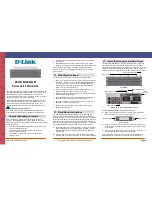
AP2500 Hardware Reference Guide
39
III. Appendix
Glossary
Byte (Binary Term)
One byte is a group of eight contiguous bits. A byte is used to represent a
single alphanumeric character, punctuation mark, or other symbol.
CHKDSK (Check Disk)
An MS-DOS command that gives you information such as disk space, files,
and directories on your hard disk drive.
COM Port
COM is a logical device name used to designate the computer serial ports.
Pointing devices, modems, and infrared modules can be connected to COM
ports. Each COM port is configured to use a different IRQ and address
assignment.
CPU (Central Processing Unit)
The CPU, sometimes called “Processor,” actually functions as the “brain”
of the computer. It interprets and executes program commands and pro-
cesses all the data stored in memory. Currently, there are socket 7, slot 1,
and slot 2 CPUs. Intel Pentium Processors fit on socket 7, Intel Pentium II
fit on slot 1, and Intel Xeon fit on slot 2.
FDISK (Fixed Disk Setup Program)
An MS-DOS program used to partition the hard disk drive. FDISK is re-
quired to setup a new non-RAID hard disk drive before formatting and in-
stalling an operating system.
IDE (Integrated Drive Electronics)
IDE devices integrate the drive control circuitry directly on the drive itself,
eliminating the need for a separate adapter card (in the case for SCSI de-
vices). UltraDMA/33 IDE devices can achieve up to 33MB/Sec transfer.
LPT Port (Line Printer Port)
Logical device name reserved by DOS for computer parallel ports. Each
LPT port is configured to use a different IRQ and address assignment.
PCI Bus (Peripheral Component Interconnect Local Bus)
PCI bus is a specification that defines a 32-bit data bus interface. PCI is a
standard widely used by expansion card manufacturers.
III. Appendix

































